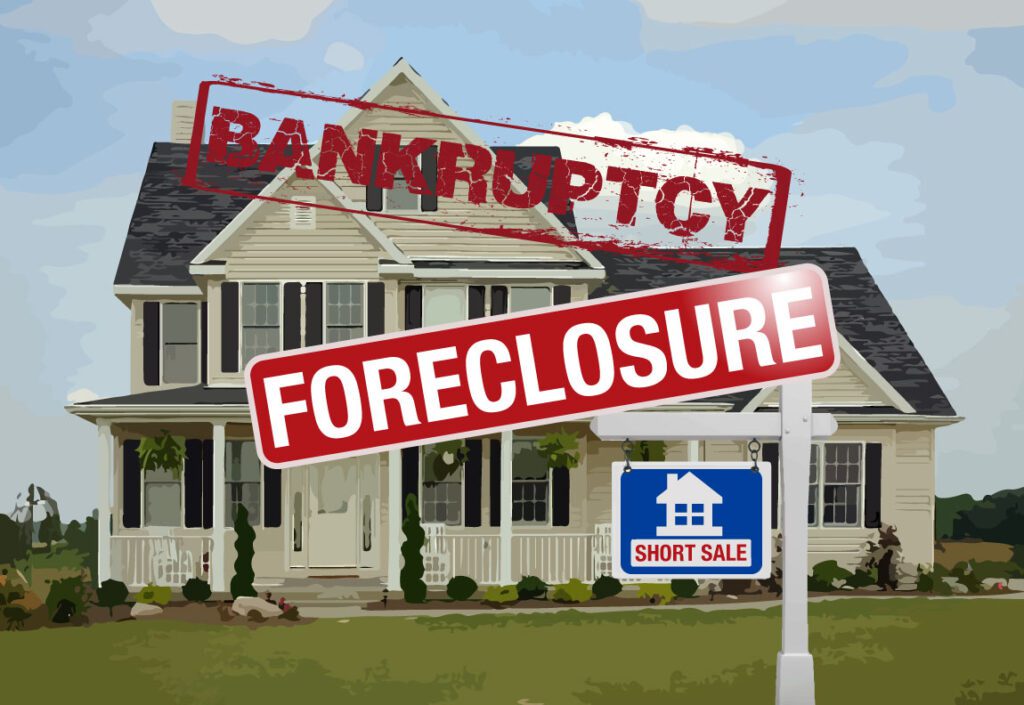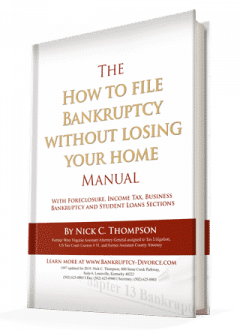oreclosure can be a devastating event for homeowners. Not only do they lose their homes, but they also suffer a huge financial setback in tax liability and the ability to find a new home. An emergency bankruptcy filing to stop foreclosure can be done to delay for 6 months or longer or permanently cure a foreclosure.
Fortunately, there is a legal process known as emergency bankruptcy filing that can help stop the foreclosure process. Emergency bankruptcy filing can be a lifesaver for those who are facing foreclosure and need immediate relief.
Filing bankruptcy at the last minute often means there is no time to plan the bankruptcy to get the maximum benefits. It is often more costly than having taken the time to do it right. Also if you wait too long it may mean you are too late to save the home or to prevent being kicked out of the home. The Chapter 7 or Chapter 13 must be filed before the Commissioners sale.
After that hour the home no longer belongs to you and even a federal court order will not reverse the sale. In order to file at the last minute, you still have to take the credit counseling and prepare the emergency bankruptcy petition with the attorney. Each step takes 2-3 hours. If you try to do this the day before the sale you rarely get it done in time. However, never forget that you may still need to file even if you don’t stop the Commissioner sale to avoid taxes or liability.
In this article, I will provide you with all the information you need to know about emergency bankruptcy filing.
So, let’s get started.
Foreclosure: A Quick Overview
Foreclosure is a legal process in which a lender sells or seizes property from a borrower who has defaulted on their mortgage payments. The lender then sells the property to recover the outstanding debt owed. Foreclosure can happen to anyone who has a mortgage, and it can be a long and complicated process. Foreclosure can also happen due to unpaid taxes.
Emergency Bankruptcy Filing
Emergency bankruptcy filing is a type of bankruptcy filing that is used to stop foreclosure proceedings or other seizures. This type of bankruptcy filing often uses a “skeletal filing” which only includes the bare minimum of information needed to initiate the bankruptcy process. Emergency bankruptcy filing is designed to be filed quickly, typically within 24 hours of the filing. By filing a skeletal petition you can take time later to finish preparation of a complete petition. But the remaining emergency petition is due shortly after the skeletal petition is filed. The case is dismissed if you do not file the remaining schedules within 14 days.
Why file for Emergency Bankruptcy?
An emergency bankruptcy filing can be a lifesaver for those who are facing foreclosure. When you file for emergency bankruptcy, an automatic stay is immediately issued, which stops all collection actions, including foreclosure proceedings, garnishments and repossessions. It can also stop an IRS seizure. This can give you time to catch up on missed mortgage payments and work out a plan to keep your home.
Eligibility for Emergency Bankruptcy Filing
To be eligible for an emergency bankruptcy filing, you must meet certain requirements. First, you must have a pending foreclosure sale, and second, you must be filing an emergency bankruptcy before the sale date. Additionally, you must eventually provide proof of assets, liabilities, income and expenses to the bankruptcy court.
The process of Emergency bankruptcy filing
The process of emergency bankruptcy filing is relatively simple. First, you must gather all the necessary documents, including your income and expense statements, and your mortgage statements. Next, you must complete these parts:
- voluntary petition part of the required bankruptcy forms 101.
- a list of creditors called the creditor matrix in a single column format.
- Statement of Social Security form b121
and emergency filing it with the court. Once the petition is filed, an automatic stay is issued, which stops all collection actions, including foreclosure proceedings and seizure.
Automatic stay
The automatic stay is a powerful tool that can provide immediate relief to those facing foreclosure. The stay stops all collection actions, including foreclosure proceedings, and gives you time to catch up on missed mortgage payments. The stay only operates while the case is being administrated.
At the end of the stay a discharge order takes over. You have to complete the credit counseling to get the stay. You have to complete the debtor education course to get the discharge. The stay is more powerful and complete than the discharge order so the judge and trustee can properly do their jobs without interference.
Meeting of creditors
After you file an emergency bankruptcy, you will be required to attend a meeting of creditors. This meeting is usually held within 30-45 days of emergency bankruptcy filings and is conducted by a bankruptcy trustee. At the meeting, you will be asked questions about your financial situation, and the trustee will determine if you are eligible for bankruptcy relief.
Discharge of debts
If you are eligible for bankruptcy relief, your unsecured debt will be discharged, meaning you are no longer legally obligated to repay them. However, not all unsecured debts can be discharged, so it is important to consult with a bankruptcy attorney to determine which debts can be discharged.
The Benefits of Emergency Bankruptcy Filing
An emergency bankruptcy filing can provide several benefits to those facing foreclosure. Some of the benefits include:
Immediate relief
When you file for emergency bankruptcy, an automatic stay is issued, which stops all collection actions, including foreclosure proceedings. This provides immediate relief to those who are facing foreclosure and give them time to catch up on missed mortgage payments. This relief however is normally temporary without a plan to cure secured or priority debts.
Time to catch up on missed payments
The automatic stay gives you time to catch up on missed mortgage payments and work out a plan to keep your home. This can help you avoid foreclosure and keep your home.
Protection of assets
When you file for bankruptcy, your assets are protected from creditors. This means that your home and other assets cannot be seized by creditors to repay your debts.
Discharge of debts
If you are eligible for bankruptcy relief, your debts will be discharged, meaning you are no longer legally obligated to repay them. This provides a fresh start for those who are struggling with debt. Sometimes a bankruptcy can remove a lien on property so you should discuss what can or will happen to secured debts such as your home or car.
Risks of Emergency Bankruptcy Filing
While emergency bankruptcy filing can provide immediate relief to those facing foreclosure, there are also some risks involved. Some of the risks include:
Risk of losing assets
When you file for bankruptcy, your assets are protected from creditors, but there is still a risk that you may lose an assets. This is because the bankruptcy trustee may sell your assets to repay your debts. Your bankruptcy attorneys will check the exemptions to see what is protected.
Negative impact on credit score
Filing for bankruptcy can have a negative impact on your credit score. Your credit score may drop significantly, and the bankruptcy will remain on your credit report for up to 10 years.
Risk of losing home in the long term
While emergency bankruptcy filing can provide immediate relief, it is not a long-term solution. If you are unable to catch up on missed mortgage payments, you may still lose your home in the long term without a Chapter 13 to cure the default.
Alternatives to Emergency Bankruptcy Filing
If you are facing foreclosure, there are several alternatives to emergency bankruptcy filing that you may want to consider. Some of the alternatives include:
Loan modification
A loan modification is a change to the terms of your mortgage that can help you catch up on missed payments and keep your home.
Refinance
Refinancing your mortgage can help you lower your monthly payments and make it easier to catch up on missed payments.
Short sale
A short sale is when you sell your home for less than the amount owed on your mortgage. This can help you avoid foreclosure and minimize the impact on your credit score.


